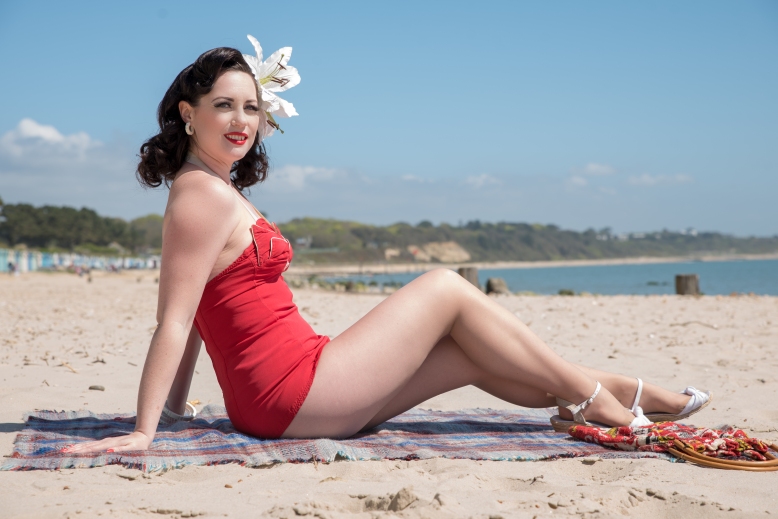
For many of us, the idea of a beautiful sunny day spent at the seaside brings back fond childhood memories of making sandcastles, eating fish and chips and exploring rock pools, or makes us dream of escaping from it all with a trip to the coast. Fresh air, a light sea breeze and the feeling of sand between your toes is something most of us crave at times, especially through those dark and vitamin D deprived winter months!
But the idea of the beach being synonymous with a happy and healthy lifestyle is anything but new. The late Victorians famously made seaside holidays possible for the working classes, who welcomed a much needed break from overcrowded housing and unsafe working conditions in the factories and mines that dominated the landscape following the Industrial Revolution. Victorian Britain was a difficult place to be for many and so the seaside was a welcome escape for those able to hit the beach.
The Victorians were known for their obsession with modesty and the beach posed a difficult dilemma! How could one get changed for a dip in the sea without compromising one’s modesty and causing a scandal?! The Victorians came up with the ingenious yet cumbersome idea of bathing machines; a horse-drawn wooden hut allowing people to enter in their heavy day wear, be transported to the sea while they changed, before quickly stepping down into the sea before anyone could catch a glimpse.
We’ve come a long way from the Victorians layers of black wool, knee-length bloomers under dresses, long stockings, fancy hair caps and lace-up bathing slippers. As society and sensibilities progressed into the 20th century so did the amount of fabric used in swimwear, which was eventually reduced to ‘one-piece’ knee length suits showing considerably more skin than ever before.
Fabric shortages during the Second World War and the introduction of new materials such as nylon, lycra and zippers presented opportunities for interesting designs. The modern bikini, given its name from the Bikini Atoll where post-war atom bomb testing was taking place, was designed by French designer Louis Réard in 1946 and although considered risqué (showing the naval) it quickly grew in popularity and was a common beach wear look in the 1940’s and 1950’s along with the ‘pin-up’ style one-piece (as seen in many of Marilyn Monroe’s beach photoshoots).
Hollywood movies and fashion magazines were first to project the idea of swimwear being seen as something sexy and glamorous to a mass audience. Ursula Andress emerging from the sea in her white bikini in the 1962 James Bond classic ‘Dr. No’, Burt Lancaster and Deborah Kerr kissing on the beach in the 1953 film ‘From Here to Eternity’, or ‘I’m Gonna Wash That Man Right Out Of My Hair’ from the 1958 movie ‘South Pacific’ and many others will forever be some of the most iconic movie scenes of the 20th century and cemented the status and desirability of the bikini in western culture.

Swimwear once again reflected societal events and space-age trends were dominant in the 1960’s with swimsuits designed using interesting materials such as denim, terry cloth, corduroy and even crochet. Indeed you may have an aunty or grandparent who can remember the saggy swimsuits of this era! Sadly, the decline of the traditional holiday destination also began in the 1960’s with the introduction of more accessible air travel, higher rates of employment and better wages and all-inclusive package holidays to places like Spain became hugely popular.
In more recent years, the seaside has seen somewhat of a revival with many towns thriving again as a result of investment and redevelopment.
New trends, such as the rise in home / flexible working, choosing ‘staycations’ over crowded beach holidays abroad, wellness (both mental and physical), and even that beach nostalgia from our childhoods combine with the age-old Victorian thirst for escapism mean the British Beach is alive and well (… weather permitting!). The statistics support this too, showing that people living near the sea are healthier and happier.
Let’s hope the popularity of the seaside and all it has to offer is here to stay!
Words, model, styling, HMUA – Miss Pearl Curl Owner of Pearl’s Pin-up Parlour, a vintage-inspired hair styling and make-up business near Southampton, UK. www.pearlspinupparlour.com
We had a fabulous day shooting on location at Avon Beach, Dorset, UK.
Photography: Tony at Pixeled Onions, Thatcham, UK. www.pixeledonions.com
Nylon dress and boned under-dress: Designed and made bespoke by Society Belle UK using original 1950’s nylon with many nods to authentic vintage design features. www.societybelle.co.uk
Hair flower: Handmade by Pearl’s Pin-up Parlour on www.etsy.com
Swimsuit: Original 1950’s and bought at Lou Lou’s Vintage Fair www.thevintagefair.com
Sandals: New Look
Jewelry – Bangles & earrings: www.bowandcrossbones.com Necklace: vintage
Sign-up to our Newsletter for blog posts, offers, news and more direct to your email inbox!



Lovely blog. Looking forward to reading more!
LikeLike